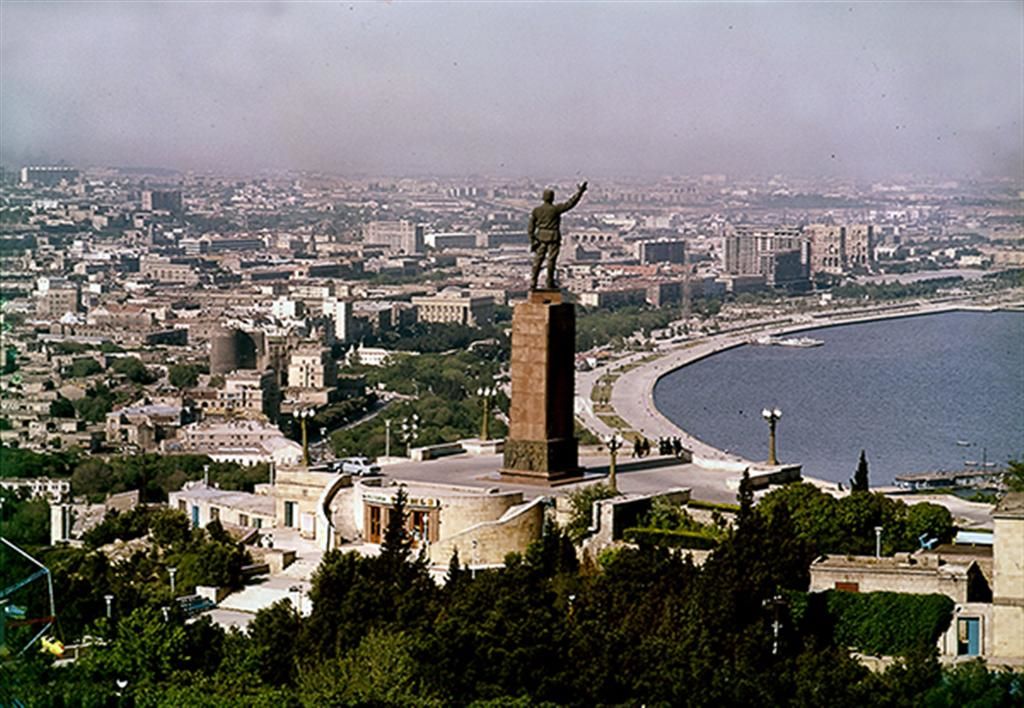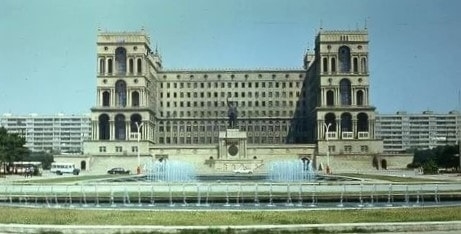The Baku Commune
RONALD SUNY
The story of the Baku Commune’s leaders, who pursued power democratically and nonviolently, belies many of the myths of the Russian Revolution.
Most accounts of the Russian Revolution tell the story of one city — Petrograd, where the Romanov regime collapsed in February and the Bolsheviks came to power in October. As decisive as the workers, women, and soldiers were in the capital, people all over Russia launched their own revolutionary movements throughout this revolutionary year.
Fifteen hundred miles to the southeast, in Baku, ethnicity, religion, and class divided the population, altering the course of history and influencing the decisions revolutionary leaders made. There, in a metropolis built on oil, October would arrive late.
When it did, the Caucasian Lenin, Stepan Shahumian, tried to win power for the people democratically and nonviolently. The story of the Baku Commune he built provides an important perspective on the Russian Revolution and the subsequent civil war.
City of Oil
Oil made Baku the largest city in the South Caucasus, a cosmopolitan workers’ oasis surrounded by largely Muslim peasant villages. At the turn of the twentieth century, it was producing more oil than the whole of the United States. Despite miserable living and working conditions, needy migrants flocked to the oil fields to find work.
Baku became the center not only of imperial Russia’s industrial revolution but also a crucible of the labor movement. Indeed, the first collective bargaining agreement between workers and industry was signed there in 1904, and the city served as a refuge for Social Democrats, particularly Bolsheviks like Joseph Stalin, when their organizations were crushed in other, less hospitable cities.
Class distinctions in Baku matched ethnic differences. Foreign investors and engineers sat at the top of the social hierarchy alongside Armenian and Russian industrialists and Azerbaijani ship owners. Russian and Armenian workers held the more skilled positions, and the unskilled workforce consisted of Muslims. As the most transient and vulnerable workers, they ended up with the dirtiest jobs.
The empire’s exploitative relationship to Caucasia was nowhere more evident than in Baku, where accumulating oil revenue trumped all other concerns. The propertied elite — that is, Armenians and Russians — handled city governance, and welfare for the lower classes was largely left to private charity. Political institutions had very few non-Christian representatives, and the regime frequently proclaimed martial law and states of emergency, undermining confidence in the local government or the rule of law.
Both ordinary people and the ruling classes wanted reform, but the tsar offered virtually no institutional avenues to effect change. The situation demanded extralegal organization, and revolutionary activists, few as they were in number, provided the available leadership and direction.
Social Democrats and Socialist Revolutionaries (SRs) often noted that Baku’s workers, divided by skills, pay rate, and ethnicity, cared more about wages than politics. Fortunately, the oil companies were unusually willing to grant concessions in order to hold on to their workforce, particularly their skilled hands.
By focusing on economic benefits, the general strike of December 1904 won an eight-to-nine-hour working day and significant improvements in wages and sick pay — a contract so good, it earned the nickname the Crude-oil Constitution.
After Tsar Nicholas II issued his “October Manifesto” in 1905, granting limited civil rights and an elected duma to his people, Baku formed a Soviet of Workers’ Deputies, one of many such councils that articulated working people’s demands at the end of that revolutionary year.
But workers continued to focus on their economic interests and eschewed politics. Shahumian lamented:
In general the workers here are a terribly mercantilistic group. They are thinking and talking about a new economic strike in order to snatch another greasy piece and increase “bonuses.”
Despite relentless police efforts, revolutionaries maintained an underground presence even after 1905, when the tsarist regime repressed the labor movement and forced many radicals either out of politics or into exile. Their work culminated in a forty-thousand-worker-strong strike in 1914, just as Russia’s war machine was gearing up.
These successes masked the tension that simmered just under the surface. The Russian- and Armenian-majority skilled workers joined unions and took in the Social Democrats’ message while Muslims only reluctantly engaged in protests or strikes.
Observers referred condescendingly to the “Tatars,” as they were called, as temnye (dark) or nesoznatel’nye (politically unconscious). Many Muslim workers remained tied to their villages and religious leaders. Though a small number of Muslim intellectuals preached socialism and nationalism, most Muslims in Caucasia had no interest in politics.
Baku’s ethnic and religious divisions reached a head in February 1905, when the tensions between Armenians and Muslims erupted into riots and interethnic killing. Muslims, alarmed by rumors that Armenians were taking up weapons, attacked first. The police and soldiers sat idle.
The Armenian Revolutionary Federation (Dashnaks), a nationalist party formed a decade earlier to defend Armenians in the Ottoman Empire, used its soldiers to protect the community. Social Democrats and liberals denounced the government’s inaction, accusing officials of promoting a pogrom. After the violence ended, hostilities continued to smolder, and, on the eve of World War I, people feared that another outbreak of violence was imminent.



